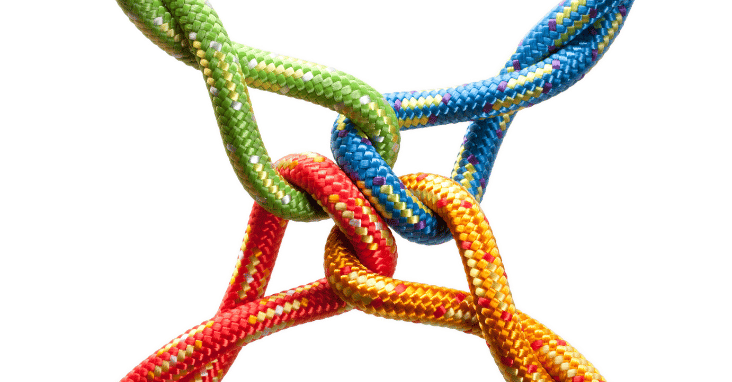In the busy world of today, finding time for lengthy team building activities can be quite the challenge. However, the importance of nurturing camaraderie and unity within your team is something that can’t be ignored. It’s like a secret ingredient that can take your team’s performance from good to outstanding.
Now, let me share a little secret with you. Did you know that team building doesn’t always have to be time-consuming or costly? That’s right! You can build a strong, unified team using simple activities that take just 5 minutes. Hard to believe? Stick around and I’ll show you how.
Team building is about strengthening teamwork through activities that help people work better together, improving communication and trust for a more productive and positive work environment.
In this post, we’ll be diving into 11 incredibly effective team-building activities that you can complete in just 5 minutes. These activities are not only fun, but they also promote key skills like communication, creativity, and trust – all while keeping things light and breezy. So, whether you’re trying to break the ice with a few new team members or inject some fresh energy into an existing group, these short and sweet activities have got you covered.
Summary
The importance of team building in today’s busy world.
The idea that team building doesn’t have to be time-consuming or costly.
An introduction to the 11 five-minute team-building activities that promote key skills like communication, creativity, and trust.

Two Truths and a Lie (1)
How it Works
Ever thought you could use a fun guessing game as a team-building exercise? Meet “Two Truths and a Lie”. This activity is as simple as it sounds, yet incredibly effective.
Here’s how you play: each person in the group shares two true statements and one false statement about themselves. These could be quirky facts, impressive achievements, or even hilarious childhood memories. Once everyone has shared their truths and lie, the real fun begins. Everyone else in the group has to put on their detective hats and figure out which statement is the lie. Intriguing, isn’t it?
The Team Building Angle
At first glance, you might wonder how a guessing game like this helps with team building. But here’s the thing – this activity helps your team members learn more about each other in a fun, low-pressure way. It encourages them to share aspects about the company culture themselves they might not discuss in a regular workday, promoting understanding and mutual respect.
Not only that, it’s a great way to stir up laughter and light-heartedness in the team – which, let’s admit, can be a welcome change from the daily grind.
Summary
“Two Truths and a Lie” is a simple, yet engaging guessing game where each person shares two true statements and one lie about themselves.
The game helps team members learn more about each other in a fun, low-pressure environment.
It fosters mutual respect and understanding, while stirring up laughter and light-heartedness.

Paper Plane Parade (2)
Ready for Take-off
Remember when we were kids and used to make paper planes, competing whose could fly the farthest? It turns out, this nostalgic activity could be your next favorite team building exercise – introducing “Paper Plane Parade”!
Divide your team into smaller groups, hand them some paper, and set the challenge – each team has to build a paper plane. The catch? These planes will be judged based on three factors – distance, flight time, and creativity. It’s not just about whose plane flies the furthest, but also who can think outside the box!
Sky-high Team Spirit
Now, you might be thinking, what’s paper plane making got to do with team building? Quite a bit, actually. First off, this activity is a fun way to break the ice and get your team members to relax. It sets a playful mood that can help turn even the most stressful day around.
Next, it fosters collaboration and communication within remote team. Team members have to work together, brainstorm, and coordinate their efforts to create the most impressive plane. It pushes them to use their individual strengths for collective success.
Lastly, the ‘judging’ aspect adds a friendly competitive edge. It motivates team members to give their best and adds a sense of excitement to the activity.
Summary
“Paper Plane Parade” is a fun and engaging activity involving building and flying paper planes.
The activity promotes a playful mood, fosters collaboration and communication, and introduces a friendly competitive edge.
It encourages team members to leverage their individual strengths for collective success.

Word Association (3)
The Rules of the Game
Ever tried playing “Word Association” with your team? If not, you’re in for a treat! This game is all about quick thinking and faster responses.
Here’s how it works: one person starts by saying a word – any word. The next person then quickly says a word that they strongly associate with the previous word. This cycle continues around the entire team, until the time runs out. The key is to not overthink – the first association that comes to your mind is your ticket to success!
Why it Works for Team Building
You might be wondering, how does a fast-paced word game contribute to team building? Let me explain.
Firstly, this game is an excellent way to break the monotony and add some liveliness to your team meetings. It’s quick, fun and easy game over, and gets everyone involved.
Secondly, “Word Association” encourages active listening. Team members need to pay close attention to what others in person, are saying to come up with their associated word. This habit of careful listening can then translate to better communication within the team.
Lastly, this game can lead to some interesting, unexpected responses, sparking laughter and creating shared moments that team members can bond over.
Summary
“Word Association” is a quick and engaging game that requires players to say a word associated with the previous word.
It breaks the monotony of regular meetings, encourages active listening, and fosters better communication.
The game leads to unexpected responses and shared laughter, promoting team bonding.

5-Minute Trivia (4)
Test Your Knowledge
Who doesn’t love a good game of trivia? It’s time to tap into that competitive spirit and knowledge thirst with “5-Minute Trivia”!
Here’s how to play: come up with a list of 10-15 trivia questions that align with your team’s interests. This could be anything from pop culture and sports to industry-related topics or facts about your company. Divide the group into teams and let the game begin. Each team tries to answer as many questions as they can in 5 minutes. The team with the most correct answers wins!
Beyond Just a Game
Now you’re probably wondering, how does a trivia game help with team building? Well, let’s break it down.
Firstly, this game brings out the competitive spirit in your team in a fun, healthy way. It motivates other team members to collaborate and work towards a common goal – to win!
Secondly, by choosing questions that align with your team’s interests, you show that you value and acknowledge their likes and preferences. This can help team members feel seen and appreciated.
Finally, a game like this provides a great platform for team members to share their knowledge and learn from each other. It can spark interesting conversations and help team members connect on a more personal level.
Summary
“5-Minute Trivia” is an exciting game where teams compete to answer as many trivia questions as they can in 5 minutes.
It fosters healthy competition, motivates team collaboration, and helps team members feel seen and appreciated.
The game provides a platform for knowledge sharing, sparking interesting conversations and personal connections.

Would You Rather (5)
The Game of Choices
“Would you rather have the ability to fly or be invisible?” Have you ever had such hypothetical questions thrown at you? Welcome to the game of “Would You Rather”!
The rules are simple. The facilitator asks the group a series of “would you rather” questions. Each question presents two options, often equally appealing or challenging, and the group has to choose one. It might seem simple, but these choices can lead to some intense discussions!
More Than Just Fun
It’s more than just a fun game though, it’s an insightful team building activity. But how? Let’s dive deeper.
Firstly, it helps team members get to know each other better. Their choices can reveal aspects of their personality, their preferences, and their way of thinking.
Secondly, the discussions that follow each choice help in improving communication within the team. Team members learn to express their opinions, listen to differing viewpoints, and come to a consensus.
Lastly, the questions can be tailored to suit the team’s needs. For instance, if you want to foster creative thinking, the questions can be framed to encourage out-of-the-box thinking.
Summary
“Would You Rather” is a game of choices that involves choosing one option out of two presented in a hypothetical question.
The game facilitates better understanding of team members, improves communication, and can be tailored to foster specific skills like creative thinking.
It helps team members express their opinions, listen to differing viewpoints, and reach a consensus.

Blind Drawing (6)
How to Play
Let’s take quick team building activities to a new level of fun with “Blind Drawing”. This engaging activity needs nothing more than a few sheets of paper, markers, and blindfolds.
Here’s the drill: One person is blindfolded and given a paper and marker. Another person then has to verbally instruct the blindfolded person on what to draw. This continues until the image is complete, or the time runs out.
Benefits for Team Building
You’re probably wondering, “How can a drawing game foster virtual team building activities?” The answer lies in the core of this activity.
Firstly, “Blind Drawing” is a game that heavily relies on trust and communication skills. The blindfolded person must trust the instructor’s guidance, while the instructor has to communicate effectively to help create the image.
Secondly, it encourages patience and understanding in person teams. Both parties need to remain patient and understanding of each other, creating a positive team dynamic.
Finally, it’s an excellent way to bring a sense of fun into the team. The final drawings, often far from what was intended, can result in a lot of laughter and shared joy.
Summary
“Blind Drawing” is an activity where a blindfolded person is guided by another person to draw an image.
The game enhances trust and communication within the team, fosters patience and understanding, and brings a fun element to the team dynamic.
The often hilarious final drawings can result in shared laughter and joy, contributing to a stronger team bond.

Team Stretching (7)
A Stretch in the Right Direction
Who said team building activities need to be all talk and no action? Let’s add some physical activity to the mix with “Team Stretching”.
In this activity, the facilitator leads the team through a series of stretching exercises. No need for complicated yoga poses or intense workouts; simple stretches will do the trick. Just make sure it’s accessible for everyone on the team.
Why it Works for Team Building
Team Stretching might seem like a surprising choice for a team building activity, but it has several benefits.
Firstly, it’s a great way to break the monotony of a regular workday. Adding a physical element can help rejuvenate the whole team and improve overall morale.
Secondly, it encourages team members to step away from their desks and invest some time in their physical well-being, which is crucial in today’s largely sedentary work life.
Lastly, performing these stretches together large groups can foster a sense of unity and collective well-being, reinforcing the feeling of being part of a team.
Summary
“Team Stretching” is a physical team building activity where the team performs simple stretching exercises together.
It helps break the monotony of the workday, encourages physical well-being, and fosters a sense of unity and collective well-being.
This activity can serve as a reminder of the importance of physical health in the workplace, improving overall team morale.

Gratitude Circle (8)
An Exercise in Positivity
Let’s shift gears and dive into a more thoughtful, positive activity – “Gratitude Circle”. This simple exercise can have profound effects on your team’s morale and cohesion.
How does it work? Gather your team in a circle. Each person takes a turn sharing something they are grateful for. It could be work-related, like a project that went well, or personal, like a relaxing weekend spent with family. The key is to focus on positive experiences.
The Power of Gratitude in Team Building
While it might seem simple, expressing gratitude can have significant impacts on team building.
Firstly, it creates a positive environment. When team members express gratitude, it shifts the focus to the positive aspects of work and life, creating an uplifting atmosphere.
Secondly, it encourages team members to recognize and appreciate each other’s contributions. As team members share their work-related gratitude, it often highlights the efforts of their colleagues, fostering mutual appreciation.
Finally, it can reveal shared experiences or values among team members, strengthening team cohesion. You might find that many of your team members are grateful for similar things, creating a shared sense of understanding and connection.
Summary
“Gratitude Circle” involves each team member sharing something they are grateful for.
The activity creates a positive work environment, fosters mutual appreciation, and reveals shared experiences or values.
It encourages recognition of team members’ efforts and contributions, fostering a stronger team bond.

Simon Says (9)
Let’s Play a Classic
Let’s take a trip down memory lane and revisit a childhood favorite – “Simon Says”. It’s not just for kids; this classic game can serve as an enjoyable and effective team building activity.
You probably remember the rules: The facilitator, or “Simon”, gives the group a series of instructions, starting with “Simon says…” The group has to follow only the commands that begin with “Simon says”. If someone follows a command without the “Simon says” prefix, they’re out!
More Than Just a Game
While it might seem like all fun and games, “Simon Says” offers valuable team building benefits.
Firstly, it encourages attentive listening. Team members have to listen carefully to the instructions to ensure they only follow the commands prefixed with “Simon says”.
Secondly, it encourages quick decision-making. Players have to quickly decide whether to follow a command based on whether it includes “Simon says”.
Finally, it’s a great ice breaker. The nature of the game, with its unexpected commands and friendly competition, creates a relaxed and enjoyable atmosphere that can help team members to connect.
Summary
“Simon Says” is a classic game where players follow commands given by “Simon” and are eliminated if they follow a command not prefixed with “Simon says”.
The game fosters attentive listening and quick decision-making.
It serves as a fun ice breaker, creating a relaxed and enjoyable atmosphere that encourages connection.

The Human Knot (10)
Get Tangled and Untangled
Ready for a more physically engaging activity? “The Human Knot” offers a hands-on approach to team building. This activity can get quite amusing as your team navigates the knot, leading to laughter and shared fun.
Here’s how to get started: Gather your team in a circle. Each person reaches out and grabs the hand of someone across from them, forming a “knot”. The objective is to untangle the knot without releasing each other’s hands.
Team Building Ties
“The Human Knot” goes beyond being a fun physical activity. It’s a metaphorical representation of the challenges teams face and how they can overcome them together.
Firstly, it encourages problem-solving. The team has to figure out a way to untangle the knot, requiring strategic thinking and collaborative decision-making.
Secondly, it promotes physical cooperation and trust. Team members have to move together, negotiating physical space while keeping their grip on each other’s hands.
Lastly, it demonstrates the power of teamwork. It’s nearly impossible for an individual to untangle the knot alone. This activity highlights how small groups working together can help solve complex problems.
Summary
“The Human Knot” is a physically engaging activity where the team forms a “knot” and must untangle themselves without releasing each other’s hands.
This activity fosters problem-solving, physical cooperation, trust, and highlights the importance of teamwork.
It offers a hands-on metaphor for how teams can navigate and overcome challenges together.

The Balloon Game (11)
Let’s Get Ballooning
Ready for a great team building activity, that’s light-hearted yet effective? Let’s introduce “The Balloon Game”. This activity involves a simple prop – a balloon – but creates an engaging dynamic that fosters communication and teamwork.
Here’s how to play: The facilitator inflates a balloon and hands it to a team member. The person has to pass the balloon to another team member without using their hands. The game continues until the balloon reaches the last person.
Why Balloons for Team Building?
You might wonder how passing a balloon around can contribute to team building. Let’s break it down.
Firstly, the “no hands” rule encourages creative thinking. Team members have to come up with non-traditional ways to pass the balloon, which can get quite amusing and spark laughter.
Secondly, it promotes non-verbal communication between remote teams. Team members have to understand each other’s actions and intentions without the help of verbal instructions.
Lastly, the simplicity and light-hearted nature of the game make it a great ice breaker, helping to ease tensions and build connections within the team.
Summary
“The Balloon Game” involves passing a balloon between team members without using their hands.
It encourages creative thinking, promotes non-verbal communication, and serves as an effective ice breaker.
The light-hearted and engaging nature of the game helps to ease tensions and foster connections within the team.

Wrap-Up and Conclusion
A Toolbox for Team Building
Congratulations! You’ve now added 11 quick, fun, and effective team building activities to your bucket list and your toolkit. Each of these activities offers its unique blend of benefits, from fostering communication and trust to promoting creative thinking and physical wellbeing.
Remember, the key to effective, team building games is regular practice and variety. Keep rotating through these activities during your team gatherings or meetings. As you do, you’ll see your team growing closer, communicating more effectively, and having a good time together.
A Stronger Team Awaits
Team building might seem like a challenging task, but with these quick activities, you can make it an enjoyable and rewarding experience. And remember, a strong, cohesive team isn’t just about better work outcomes – it’s about creating a positive work environment where everyone feels valued and connected. So grab that pack of balloons or start that round of “Would You Rather”. Your stronger, closer team awaits.
Summary
We’ve covered 11 quick and effective team building activities, each offering its unique benefits.
Regularly rotating these activities in your team gatherings can result in a closer, more effective team.
Team building is not just about work outcomes but also about fostering a positive work environment.
These activities are designed to make team building an enjoyable and rewarding experience, leading to a stronger, more cohesive team.

Bonus: Leveraging Technology for Team Building
Embracing the Digital Age
As we continue to embrace the digital age, technology becomes an integral part of our lives, including our work and team building activities. By leveraging various software tools, you can organize, manage, and even improve the activities we’ve discussed. Let’s explore how.
Tools for Team Building Enhancement
1. Video Conferencing Platforms (Zoom, Google Meet, Microsoft Teams)
The advent of reliable video conferencing platforms like Zoom, Google Meet, and Microsoft Teams has been a game-changer for remote teams. These platforms allow you to carry out almost all the activities mentioned, from “Two Truths and a Lie” to “The Human Knot” (with some adjustments). Their features, such as breakout rooms, screen sharing, and in-meeting chats, can enhance engagement and interaction.
2. Online Polling and Survey Tools (Mentimeter, Kahoot!, SurveyMonkey)
Platforms like Mentimeter and Kahoot! can bring an extra layer of engagement to activities such as “5-Minute Trivia” or “Would You Rather”. They allow you to create interactive quizzes or polls, making these activities more fun and visually engaging. SurveyMonkey can help gather feedback after team building sessions, enabling you to continually refine and improve your activities.
3. Task Management Tools (Trello, Asana, Notion)
For activities that require organization and planning, such as “Paper Plane Parade”, task management tools can come in handy. With platforms like Trello, Asana, or Notion, you can create step-by-step task lists, assign roles, set deadlines, and monitor progress. This can also add an element of gamification, making the activity more exciting.
4. Collaboration Tools (Slack, Microsoft Teams)
Collaboration tools like Slack or Microsoft Teams can help extend the benefits of team building activities beyond the scheduled time. For instance, after a “Gratitude Circle” activity, you can create a dedicated channel where team members continue to share things they are grateful for, fostering an ongoing culture of positivity.
Summary
Technology, in the form of various software tools, can enhance team building activities.
Video conferencing platforms enable remote teams to participate in activities.
Online polling and survey tools add interactivity to trivia and preference-based activities and allow for feedback collection.
Task management tools aid in organizing and planning activities.
Collaboration tools can help extend the impact of activities beyond the scheduled time, fostering ongoing positive interactions.















